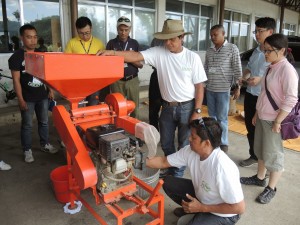Experts of the Agriculture Department, Punjab Agricultural University and the Krishi Vigyan Kendra are making efforts to increase the area under direct seeding of rice (DSR) in the district.
Despite some problems experienced by farmers, experts say the traditional puddling technique should be replaced DSR as the latter requires less water. Puddling also affects the water recharging process and hardens the soil ecology system.
Read the full story at The Tribune
More information on direct-seeded rice:
Direct seeded rice (DSR) 6 steps to success
DSR is an alternative crop establishment method for rice where seeds are sown directly without raising them in a nursery. This poster explains the essential 6 steps of this process.
IRRI eyes public-private sector support for wider DSR adoption
IRRI is targeting more public-private support to address key challenges in the successful and wider adoption of Direct-Seeded Rice (DSR) systems in South and Southeast Asia.
Presented during the recent launch of the Direct-Seeded Rice Consortium (DSRC), IRRI’s main proponent for the initiative, were priority areas for DSR research with a particular focus on improving mechanized and precise direct-seeding practices to help current DSR end-users maximize its full benefits.
Research to improve water-use efficiency in rice
The practice of direct seeding of rice (DSR) into dry soil reduces the need for water in land preparation and allows farmers to plant rice crops before the rains of the wet season arrive. This means that rainfall is used in supporting crop growth rather than in land preparation activities. Planting earlier can also help rice avoid drought that generally occurs late in the wet season in rainfed systems. With this in mind, efforts within the breeding program at IRRI targeting rainfed environments use DSR as the crop establishment method in field trials at the ZES. Embedding this practice in the breeding program helps ensure that both genetics and agronomy work together effectively to achieve the best outcome for farmers.







